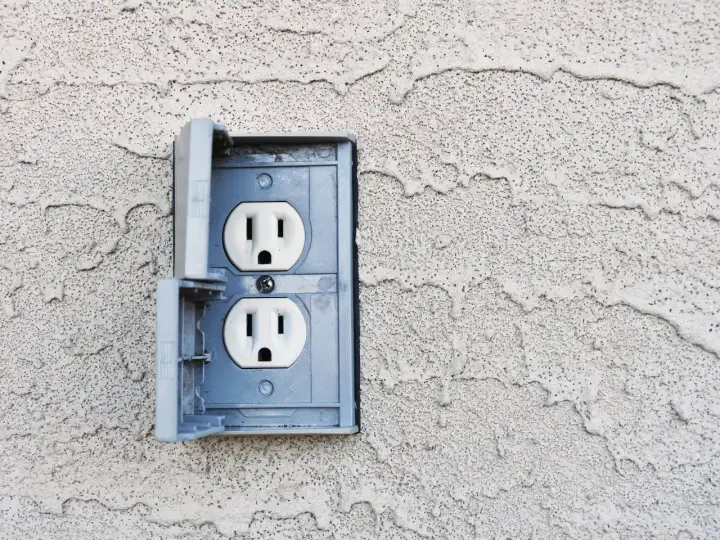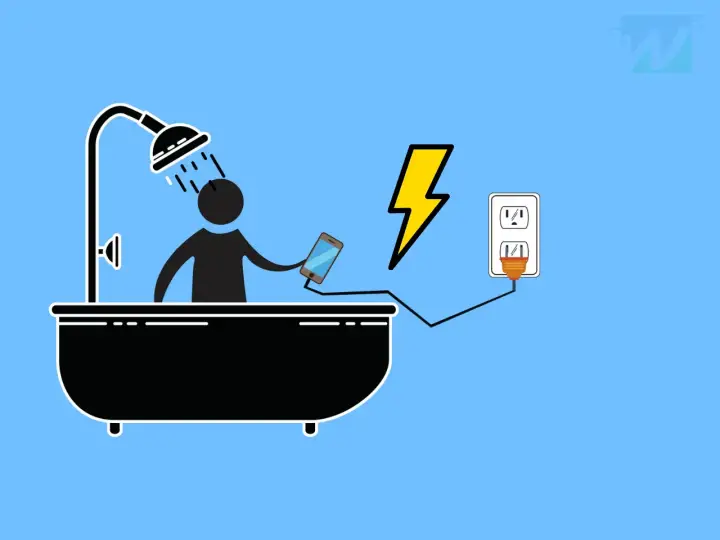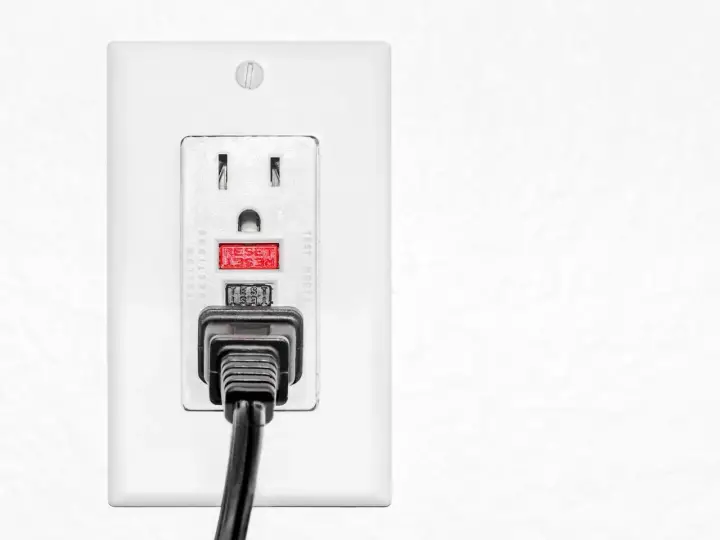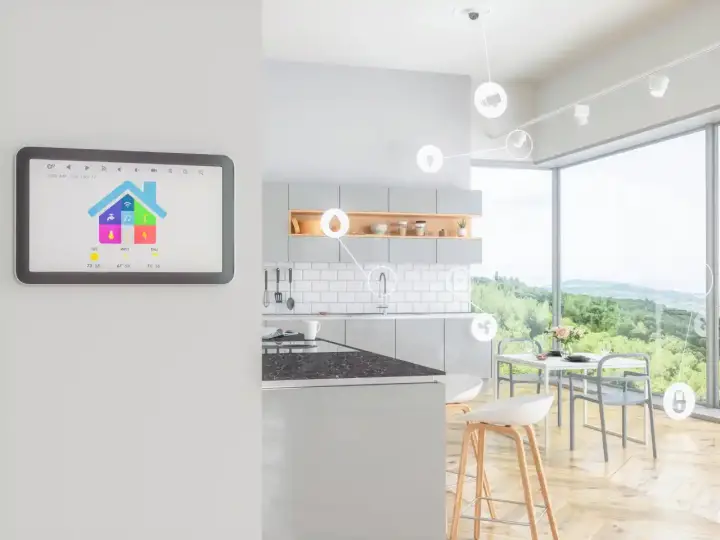How to Use Z-Wave Smart Plugs Outside With GFCI Safely
Updated on 21st Feb 2021 22:25 in General, Smart
When most people think of a smart home, they think of lights turning on and off themselves or coffee being made automatically in the morning. All of these things are related in one crucial way: they use electricity. A computer can send them commands by transmitting data wirelessly to the desired device. What about outdoors or other locations where water could be present? You need to be careful as water combined with electricity can be dangerous. Let's see how we can use a Z-Wave plug in areas such as the outdoors or a bathroom.

Disclaimer: This post contains affiliate links. As an Amazon Associate, I earn from qualifying purchases.
Table of Contents
Warning: the following article deals with mains electricity. Never attempt to do electrical work you aren't qualified to do, and consult an electrician before doing any work! Here I explain various ways to safely achieve similar results, but each situation is different, so you should only use this as a guide. Consulting a professional ensures everything is done correctly.
How to keep a smart plug safe near water
Before discussing specific products and solutions, we need to understand why water can be dangerous near electricity. The simple answer is that water can conduct electricity, which can cause an unsuspecting victim to close the circuit between an outlet and ground. The more complete answer is that minerals inside the water are conductive, causing it to become conductive itself.
Dangerous example
For example, consider someone in the bath with a cellphone in hand that's also charging via a cable connected to the wall. You probably shouldn't use your phone in the tub for the sake of keeping it functional, but this situation is dangerous to more than just the phone.

If the phone should drop into the water or otherwise conduct the electricity from the charger, the person could receive a lethal shock. Water can easily get into the cracks of any electrical device, which could damage them, potentially resulting in nearby water becoming energized. Pipes are usually connected to earth/ground to prevent any electrical charge building inside them, but this also means the water will lead the charger's power to ground. Unfortunately, the electrical current will also flow through the person in its path to ground, which will usually cause serious injury or even death.
The life-saving GFCI outlet
The previous situation is tragic and, unfortunately, happens quite a lot throughout the world. Fortunately, there is a solution called a Ground Fault Circuit Interrupter (GFCI), which will detect the problem and disconnect the power before damage can be done. They can do this by measuring the difference between the number of electrons that leave the live or "hot" wire and the ones that return through the neutral. If the difference is significant, it will shut off the power as an abnormal situation has occurred. For the previous example, the electrons did not return as they went through the person and water directly to ground.
This would potentially save the person in the bathtub, and this is why these devices are required by law in any area where water is present. Some parts of the world use a Residual-current device (RCD) often installed in the main electrical panel instead of special outlets, but the effect is the same.

How this applies to smart plugs
We must be cautious with electricity around water, and smart plugs are no exception. In fact, I would argue that they are more dangerous than regular outlets as they are designed to be automatically operated by a computer. That means no one needs to be present for a dangerous situation to occur, potentially leading a person unknowing of what's happened into serious trouble.
Waterproof housing
The first step to keeping a smart plug safe while outside is to keep it physically away from any water. That means mounting everything inside a waterproof case. Commercial plugs usually have a thick housing designed to keep all the electronics safe from the elements. Using an indoor device in an area where water could reach it is extremely dangerous and should never be done. As you might guess, that's because most indoor devices have holes where water could easily enter.
Current leakage detection
In addition to keeping the electrical components safe, a smart plug should also be on a circuit with GFCI capabilities. If an abnormality ever occurs (such as current going through water and shocking someone), the system will disconnect the power. This is even more important outdoors, where the conditions are unpredictable as intense weather could interfere with automation in dangerous ways. These safety systems are crucial and should never be omitted to ensure safe operation.
Now we will look at ways to implement an outdoor smart plug safely.
Using Z-Wave plugs near water
There are generally two types of "smart plug" sold to consumers: an outlet and a plug-in device. The plug-in types are usually the easiest to use due to their simple installation - simply plugging them into an existing outlet is all you need to do. While indoor smart plugs usually look like a phone charger that you can plug something into, the outdoor kind are more like a power bar. They are rugged and provide protection to the electronics inside via a strong housing with sealed joints and with port covers that completely cover the outlet when not in use.
These are really easy to use because they plug into your existing outlets and immediately work as required. Your home should already be equipped with GFCI outlets in all locations near water to comply with building laws. If your exterior outlets are not equipped with GFCI protection, you should call an electrician to install them before using any smart devices outside. While smart plugs are designed with safety in mind, they will not protect you against problems with the device you are controlling. As such, I strongly recommend using a GFCI outlet with smart plugs outside!
With that said, here are a few Z-Wave compatible outdoor smart plugs.
Plug style
GE Enbrighten Z-Wave Plus Outdoor Switch
From the widely known GE brand, this smart plug is designed to make controlling things outdoors a breeze. It's rated at 600 Watts in most applications with other specifications for specific situations. It also supports Z-Wave Plus and is compatible with most Z-Wave smart home systems. Finally, installation is as simple as plugging it into a nearby outlet - though you'll want to make sure the outlet is completely covered.
Check out the GE Enbrighten Z-Wave Plus Outdoor Switch on Amazon!
EVA LOGIK Outdoor Z-Wave Plus Smart Outlet
This smart plug includes two outlets - a rare feature for outdoor Z-Wave plugs. It supports a maximum of 15A at 120V, allowing for control of anything that uses a standard (15A) outlet. The plug is waterproof to IP65 standards, meaning it will resist water splashes but should not be immersed in the water. It supports Z-Wave Plus and is compatible with most Z-Wave smart home systems. The extra outlet can be super useful, considering it acts as a weather-resistant smart power bar.
Check out the EVA LOGIK Outdoor Z-Wave Plus Smart Outlet on Amazon!
Outlet style
The outlet style is more complicated than the plug-in models because it requires wiring and installation in the wall. Additionally, there aren't really any outlets specifically designed for the outdoors as they are meant to be protected via an outlet cover. As such, you will usually find the same outlets outdoors as you would indoors except with the addition of a rugged cover to prevent water from getting in. In most places, the law requires outdoor outlets to be GFCI to prevent any accidents potentially caused by weather.
A single GFCI outlet can be wired to protect all of the outlets downstream such that only one actually needs to be a special type. If an abnormal situation were to occur in a regular outlet connected via the GFCI, the system would trip, cutting power to all outlets on the circuit. While convenient, this practice may not be legal everywhere, so be sure to check your local regulations before planning such a system. To get a smart outlet outside, the technique is to install a GFCI outlet in a box nearby and to wire the smart plug through the protected outlet. This way, if something bad happens on the smart outlet, the GFCI will trip and disconnect power.
Keep in mind that using this method still requires all outlets to be covered with an outdoor cover!
Honeywell UltraPro Z-Wave Plus Smart Receptacle
This smart outlet enables the control of the bottom port while keeping the top one powered at all times. It supports standard receptacle specifications with 120V at 15A for most applications. Works well as a signal extender as it is permanently powered and does not really move. It supports Z-Wave Plus and is compatible with most Z-Wave smart home systems. Use outside will require a waterproof outlet cover and a GFCI outlet to connect to. Keep in mind this is not designed to go outside. Use outside is at your own risk - so make sure it's installed properly!
Check out the Honeywell UltraPro Z-Wave Plus Smart Receptacle on Amazon!






